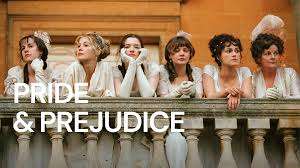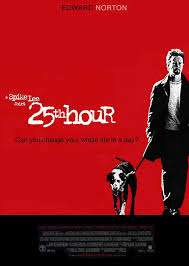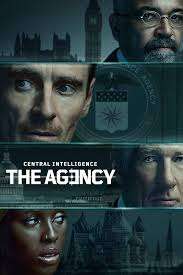When director Joe Wright took on the challenge of adapting Jane Austen’s Pride and Prejudice for the big screen, he faced immense pressure. Austen’s 1813 novel had already been adapted numerous times—most notably in the beloved 1995 BBC miniseries starring Colin Firth. Yet, Wright’s 2005 film not only held its own but became a cultural phenomenon in its own right, enchanting audiences with its lush cinematography, emotionally charged performances, and a fresh, modern energy that made Austen’s story feel newly alive.
Nearly two decades later, Pride and Prejudice (2005) remains one of the most beloved romantic dramas of all time. In this deep dive, we’ll explore why this adaptation continues to resonate—from its casting triumphs and breathtaking visuals to its controversial choices and lasting legacy.
1. A Bold New Take on a Classic Story
The Plot (For the Uninitiated)
Set in early 19th-century England, Pride and Prejudice follows Elizabeth Bennet (Keira Knightley), the sharp-witted second daughter of the Bennet family, as she navigates societal expectations, familial pressures, and her own prejudices. When the proud and wealthy Mr. Darcy (Matthew Macfadyen) enters her world, their initial dislike slowly transforms into one of literature’s most iconic love stories.

How the 2005 Film Diverged from Tradition
- A Grittier, More Naturalistic Tone
- Unlike the polished, mannered adaptations before it, Wright’s film embraced a raw, almost earthy aesthetic—muddy hems, windswept hair, and bustling, chaotic households.
- This made the Bennets feel like a real family, not just Regency-era caricatures.
- Faster Pacing & Streamlined Storytelling
- At just 2 hours and 9 minutes, the film had to condense Austen’s dense social satire. Some subplots (like Mr. Collins’ extended presence) were trimmed, focusing tightly on Elizabeth and Darcy’s dynamic.
- A More Youthful Energy
- Knightley was 20 years old during filming, closer to Elizabeth’s actual age (unlike Jennifer Ehle, who was 29 in the 1995 series).
- This brought a rebellious, impulsive energy to Lizzie, making her defiance of societal norms feel even more visceral.
2. Casting Choices That Defined the Film

Keira Knightley as Elizabeth Bennet
- Initially met with skepticism (many fans were loyal to Jennifer Ehle’s portrayal), Knightley silenced critics with a fiery, vulnerable performance.
- Her Elizabeth was less polished, more passionate—prone to eye rolls, sarcasm, and unchecked emotion.
- Earned her an Academy Award nomination for Best Actress, a rarity for a period drama.
Matthew Macfadyen as Mr. Darcy
- Following Colin Firth’s legendary wet-shirt scene was no easy task, but Macfadyen made the role his own.
- His Darcy was brooding, socially awkward, and deeply introverted—less a cold aristocrat and more a man struggling with his own emotions.
- The dawn proposal scene (“You have bewitched me, body and soul…”) remains one of cinema’s most romantic moments.
Standout Supporting Cast
- Donald Sutherland & Brenda Blethyn as Mr. and Mrs. Bennet—bringing depth to what could have been comic relief.
- Rosamund Pike as the sweet, naive Jane Bennet.
- Tom Hollander as the hilariously obsequious Mr. Collins.
- Judi Dench in a scene-stealing turn as the formidable Lady Catherine de Bourgh.
3. The Visual Poetry of Joe Wright’s Direction

Cinematography That Feels Alive
- Shot by Roman Osin, the film used natural light and long, unbroken takes to create an immersive atmosphere.
- The now-iconic sunrise meeting between Darcy and Lizzie was filmed in one take, with the misty English countryside adding to the ethereal romance.
The Ball Scene: A Masterclass in Tension
- The Netherfield ball sequence is wordless storytelling at its finest—Lizzie and Darcy’s glances, the way the camera swirls around them, the muffled sounds of the party fading as they lock eyes.
- The hand flex as Darcy helps Lizzie into the carriage has spawned endless fan analyses.
The Soundtrack’s Emotional Power
- Dario Marianelli’s piano-and-strings score (performed by Jean-Yves Thibaudet) is achingly beautiful.
- The recurring “Dawn” theme perfectly captures the film’s mix of hope and melancholy.
4. Controversial Choices & Fan Debates
The Ending: A Radical Departure
- The original UK ending had Elizabeth and Darcy sharing a quiet moment at Pemberley, saying simply, “Mrs. Darcy…”
- The US/international version added a romantic sunset kiss—a decision Wright later called “a mistake” but one that audiences adored.
Historical Accuracy vs. Artistic License
- Purists criticized Lizzie’s unchaperoned walks and the Bennets’ slightly shabby home as unrealistic for the gentry.
- Yet these choices humanized the characters, making them more relatable to modern viewers.
“Not as Good as the 1995 Miniseries?”
- A perpetual debate among Austen fans.
- The 1995 version is more textually faithful, but the 2005 film captures the emotional core in a way that resonates widely.
5. The Lasting Legacy of Pride & Prejudice (2005)
A Gateway to Austen for New Generations
- Introduced millions of young viewers to Austen’s work.
- Inspired countless book sales, fanfictions, and even memes (e.g., “Let’s add ‘Pride and Prejudice 2005 but it’s just Darcy staring at Lizzie’ to the queue”).
Influence on Later Period Dramas
- Films like Anna Karenina (2012) and Emma. (2020) borrowed its naturalistic aesthetic.
- TV’s Bridgerton owes a debt to its emotional intensity and modern sensibility.
Cultural Staying Power
- Still ranked among the greatest romance films by Empire, AFI, and Rotten Tomatoes.
- Annual “Pride and Prejudice” marathon screenings draw devoted fans.
6. Where Are They Now? The Cast’s Journeys
- Keira Knightley – Became an A-list star (Pirates of the Caribbean, Atonement), now balances blockbusters with indie films.
- Matthew Macfadyen – Found new fame as Tom Wambsgans in Succession.
- Rosamund Pike – Oscar-nominated for Gone Girl, now a sought-after character actress.
- Joe Wright – Went on to direct Atonement, Darkest Hour, and Cyrano.
7. Why This Adaptation Still Matters
Pride and Prejudice (2005) succeeded because it wasn’t afraid to break convention. It took a 200-year-old story and made it feel urgent, passionate, and real. Whether you’re a lifelong Austen devotee or a newcomer, this film offers something timeless: the thrill of two people truly seeing each other for the first time.





